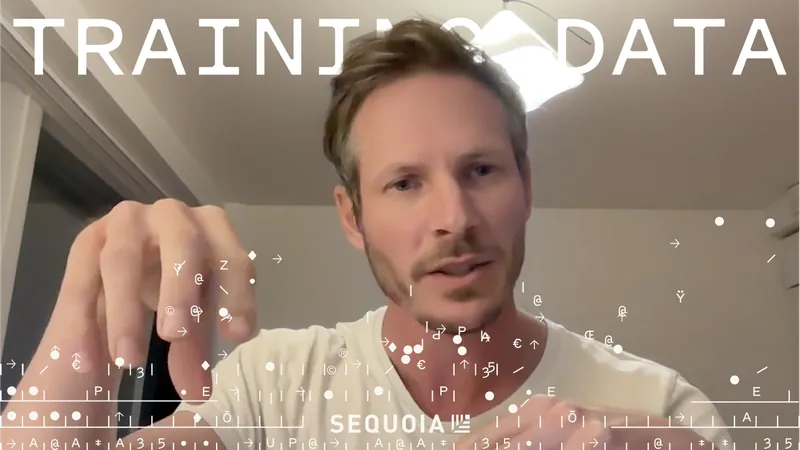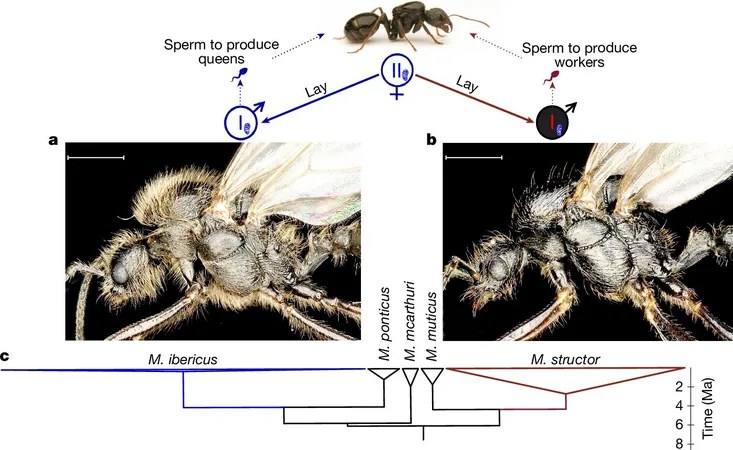
Unlocking Robotics: How Hugging Face's Thomas Wolf is Pioneering an 'App Store' for Robots
2025-09-12
Author: Nur
The New Revolution in Robotics
Thomas Wolf, co-founder and Chief Science Officer of Hugging Face, is spearheading an exciting initiative poised to change the landscape of robotics as we know it. With the launch of LeRobot, startups are increasingly leveraging its framework to automate tasks in fascinating new ways. Wolf has likened this to a revolutionary 'app store' for robots, where developers can create and design applications using affordable robotic components.
The Vision Behind LeRobot
In an interview, Wolf shared his belief that we're on the brink of a robotics explosion similar to the transformative wave of AI a few years ago. The groundwork for this was laid 18 months ago with LeRobot, the culmination of research and advances in robotics that allow anyone, from hobbyists to entrepreneurs, to tinker with robot programming. The key component in this initiative is the SO-100, a simplistic yet efficient robotic arm designed to be accessible at just $100.
Bridging the Gap Between Hardware and Software
Wolf wants to democratize robotics just as AI development has become more widespread. The aim is to provide a robust library filled with policy models, software, data sets, and the essential hardware needed for robotics, effectively lowering the entry barrier for budding roboticists.
The Goldmine of Community Engagement
The success of LeRobot hinges on building a vibrant community. With over 6,000 to 10,000 engaged participants, events like hackathons have showcased the project's global appeal. Wolf notes that while academic labs are adopting LeRobot, the excitement is evident among software developers who want to venture into the physical realm of robotics.
A New Era of Accessibility: Reachy Mini
Introducing the Reachy Mini, a robot priced at around $300 aimed at consumers, educators, and developers alike. This approachable robot is intended to create an engaging learning environment, functioning as a playful tool for understanding AI through physical interaction, where children can even 'vibe-code' to control it.
Imagining the Future of Robotics
As Wolf envisions a future crowded with robots, he emphasizes that they shouldn't be exclusive to the wealthy elite but accessible to the masses. His disdain for a singular focus on humanoids reflects a broader ambition: crafting a diverse ecosystem of robots that many people can participate in building and using.
The Data Dilemma
Unlike language models that thrive on expansive datasets, robotics faces a clear bottleneck due to the lack of diversity in training data. Wolf acknowledges this challenge while proposing a collaborative data-sharing system where community members can contribute to building diverse datasets that can fuel the next generation of robots.
A Flourishing Future for Open Source Robotics
Wolf's imaginative exploration of robotic applications is underscored by a deep belief in open-source technology. Just like with LLMs (large language models), he expects a blend of open and closed-source solutions to coexist, nurturing innovation while ensuring safety and adaptability. His aim is to push back on elite constraints to allow everyone to contribute to the burgeoning fields of AI and robotics.
Final Words of Wisdom
Wolf's long-term vision isn’t just about creating robots; it's about empowering individuals to actively participate in this technological renaissance. 'In 10 years, I hope that everyone feels capable of building with AI and robotics,' he states. This initiative, driven by the principles of accessibility and community, is set to leave a lasting mark on both AI and robotics, establishing a foundation for a diverse and collaborative future.




 Brasil (PT)
Brasil (PT)
 Canada (EN)
Canada (EN)
 Chile (ES)
Chile (ES)
 Česko (CS)
Česko (CS)
 대한민국 (KO)
대한민국 (KO)
 España (ES)
España (ES)
 France (FR)
France (FR)
 Hong Kong (EN)
Hong Kong (EN)
 Italia (IT)
Italia (IT)
 日本 (JA)
日本 (JA)
 Magyarország (HU)
Magyarország (HU)
 Norge (NO)
Norge (NO)
 Polska (PL)
Polska (PL)
 Schweiz (DE)
Schweiz (DE)
 Singapore (EN)
Singapore (EN)
 Sverige (SV)
Sverige (SV)
 Suomi (FI)
Suomi (FI)
 Türkiye (TR)
Türkiye (TR)
 الإمارات العربية المتحدة (AR)
الإمارات العربية المتحدة (AR)